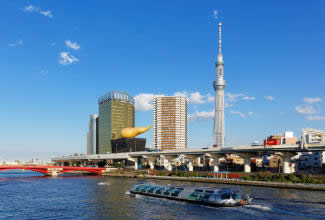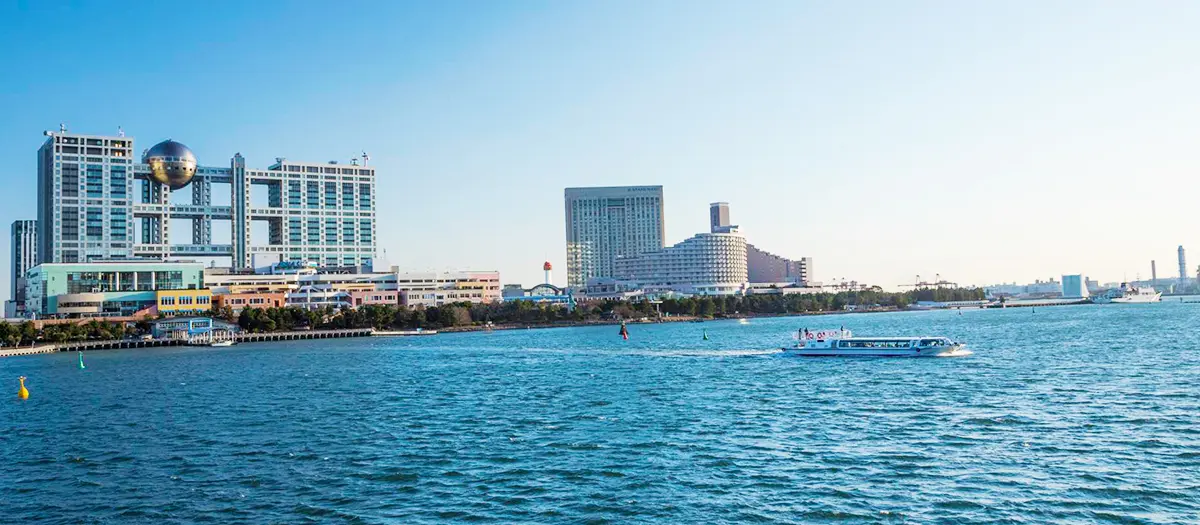
- Share this page
Share this page
- EN
Select Language
- FAVORITES
- Search
Detailed search: You can do a detailed search by keyword, genre, time, area and tag.
Main content starts here.
- Visit Tokyo |
- SPOT |
- Waterfront |
- Historic Waterfront Areas of Tokyo
Updated: November 13, 2025
Historic Waterfront Areas of Tokyo
Trace Tokyo's waterways and rivers for a glimpse of the city’s past and present
Narrow waterways weave their way through central Tokyo passing key attractions like the Imperial Palace, and while the canals may no longer play the vital role they once did, modern-day Tokyo would not be the city it is without them. Explore the channels and waterfront areas to see how Tokyo has changed and continues to develop.
Tips
- Cruise Tokyo’s historic waterways
- Stroll through the former merchant districts of Nihonbashi and Kanda
- Explore Tokyo’s history and culture at the temples, gardens, and castle grounds of pre-modern Tokyo
- Visiting Tokyo's new, up-and-coming bay areas
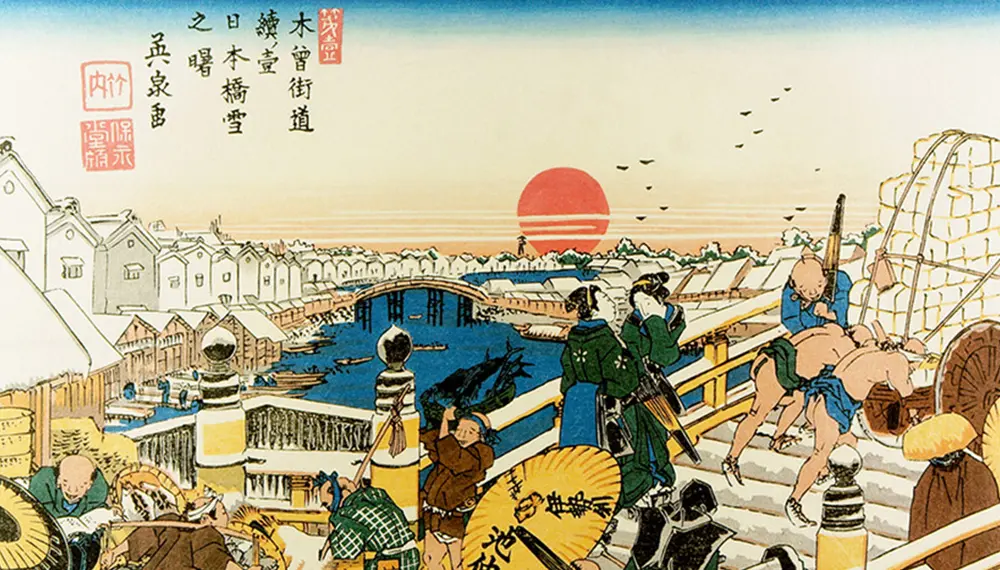
Nihonbashi: Snowy Morning, by Keisai Eisen
The eastern city of water
Bustling with boats that ferried people and goods through the city, life revolved around Tokyo's rivers and waterways during the Edo period (1603-1867). Historic documents suggest comparisons were made between Edo (present-day Tokyo) and Venice, and woodblock prints from the time conjure up images of a kind of Venice of the East.
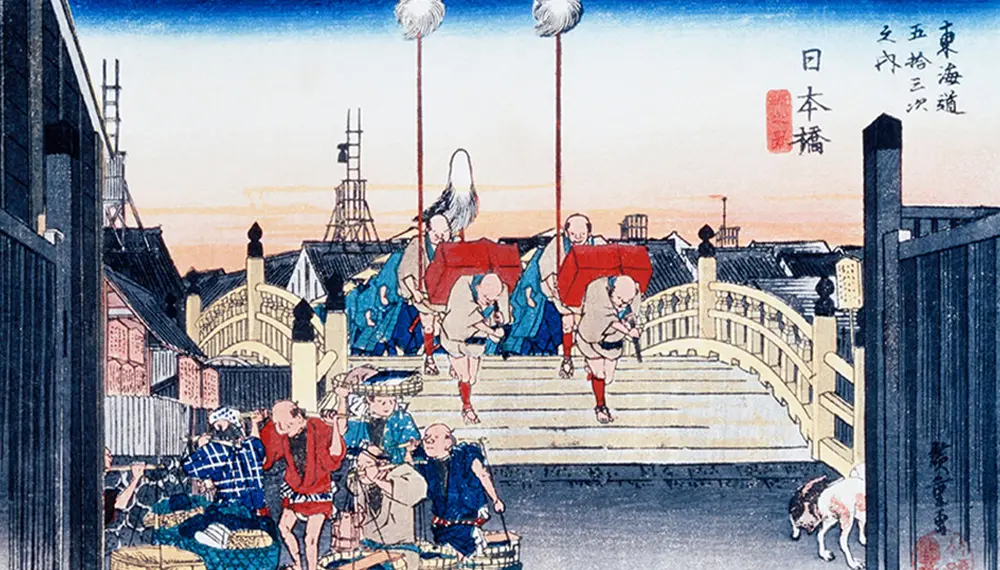
53 Stations of the Tokaido: Nihonbashi, an ukiyo-e woodblock print by Ando Hiroshige
Flourishing around waterways
Commodities came from across Japan to the city of Edo by sea. From there, they were transported deep inland by way of the first Tokugawa shogun’s network of waterways. At each pier, they were unloaded at places called kashi, which became ideal hubs of business for warehouses, wholesalers, and markets. The areas around these kashi naturally attracted shops and restaurants for serving the many workers. And so, Edo flourished around waterways and grew into a buoyant city, home to more than a million residents and workers.
Yakatabune —the culture of waterside entertainment
Cruise Tokyo’s waterways while making merry in the tender glow of lanterns on one of Tokyo’s famous yakatabune boats, which dot the city’s maze of waterways with light and laughter. Eat and drink to your heart’s content as the boat slips through the city’s historic waterfront areas.
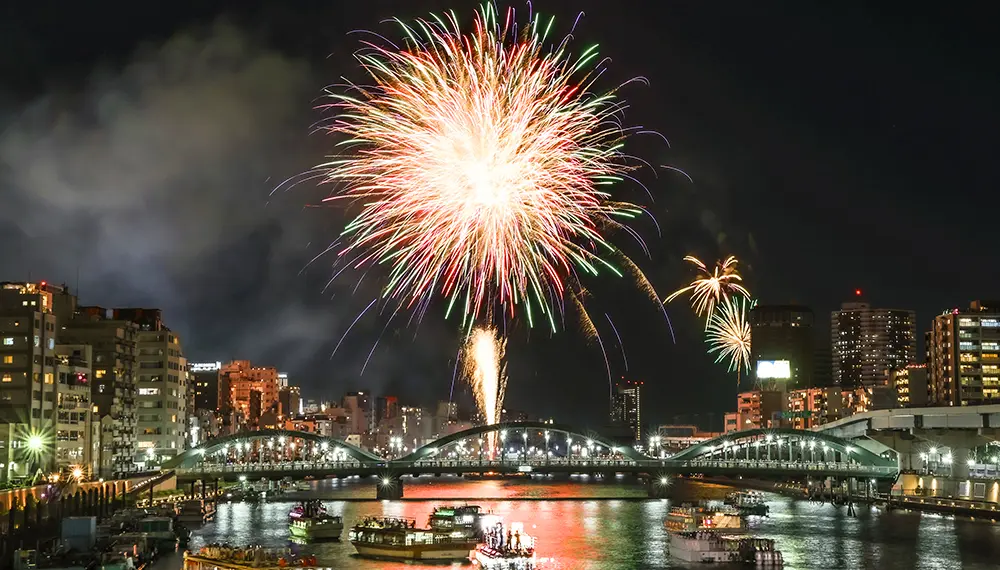
Fireworks reflected in the waters of the Sumida River
Vestiges of Edo and a fresh angle on present-day Tokyo
Today, Tokyoites and visitors alike continue to travel the rivers and canals of Tokyo by boat. The cool breeze, the murmur of the traffic along the banks, and the vigorous calls of the workers maneuvering the boats offer a glimpse of the vestiges of the lively and energetic Edo. The waterways also provide a fresh view of the beauty of present-day Tokyo lined with modern buildings. Don't miss the opportunity to hop on a boat and experience Tokyo—the "city of water."
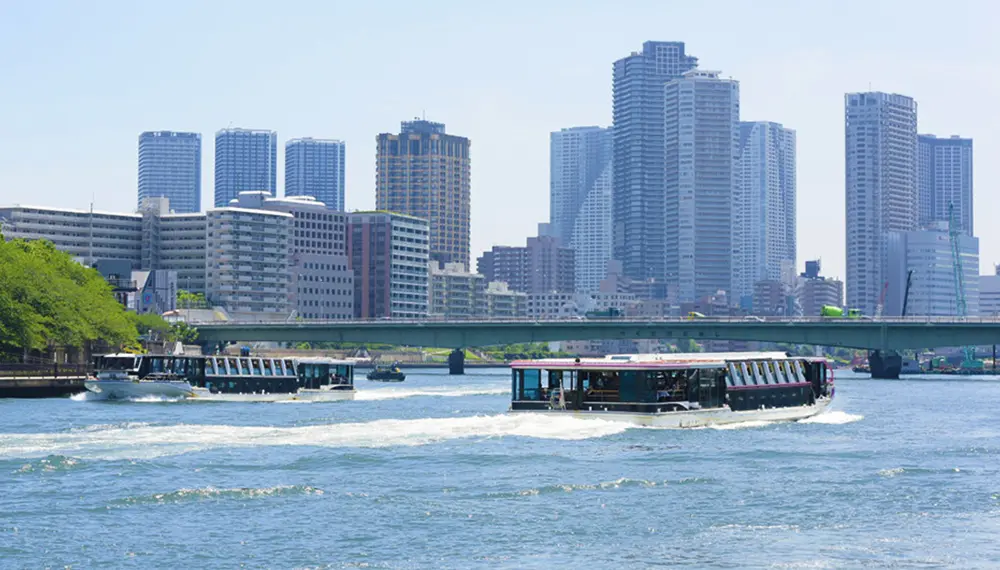
Traffic on the Sumida River today
Downtown Tokyo's former merchant quarters
Served by multiple waterways, the area from Akihabara south through Kanda, Nihonbashi and Ginza was one of the liveliest and most prosperous districts of Edo, inhabited by merchants and artisans. Today, these riverside neighborhoods remain key business districts with department stores and large retail outlets lining the main streets.
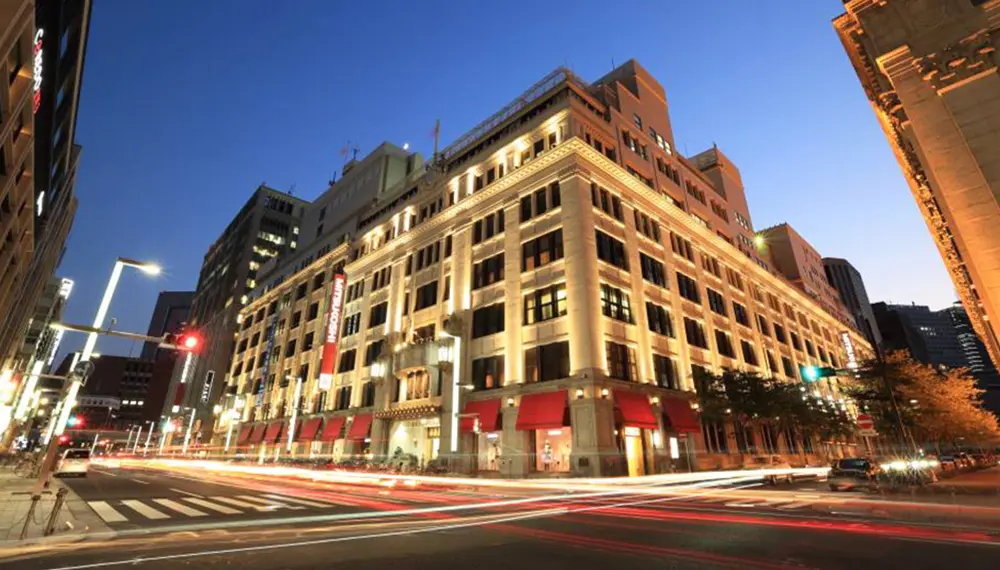
Nihonbashi today, with Japan's first department store in the background
For remnants of the Edo period, visit Kanda Myojin Shrine, Mitsukoshi—Japan's first department store, founded by the wealthy Mitsui merchant family—and Nihonbashi Bridge, the beginning of the Edo Five Routes (Gokaido).
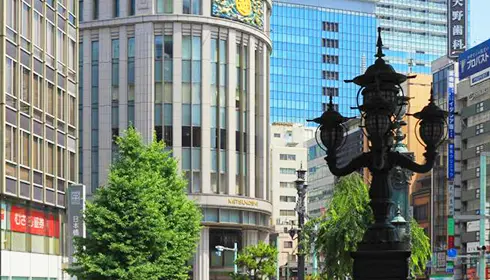 Kilometer Zero Plaza and Mitsukoshi
Kilometer Zero Plaza and Mitsukoshi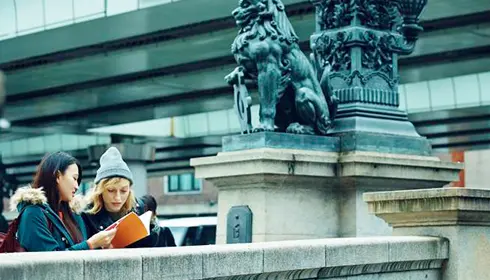 Nihonbashi Bridge, the origin of the Gokaido
Nihonbashi Bridge, the origin of the GokaidoOther historic waterfront sights and attractions
Head further north up the Sumida River and you will find Sensoji, Tokyo's oldest temple. Set aside a good half day to see the temple, its iconic Thunder Gate (Kaminari-mon), and the shops that line the approach.
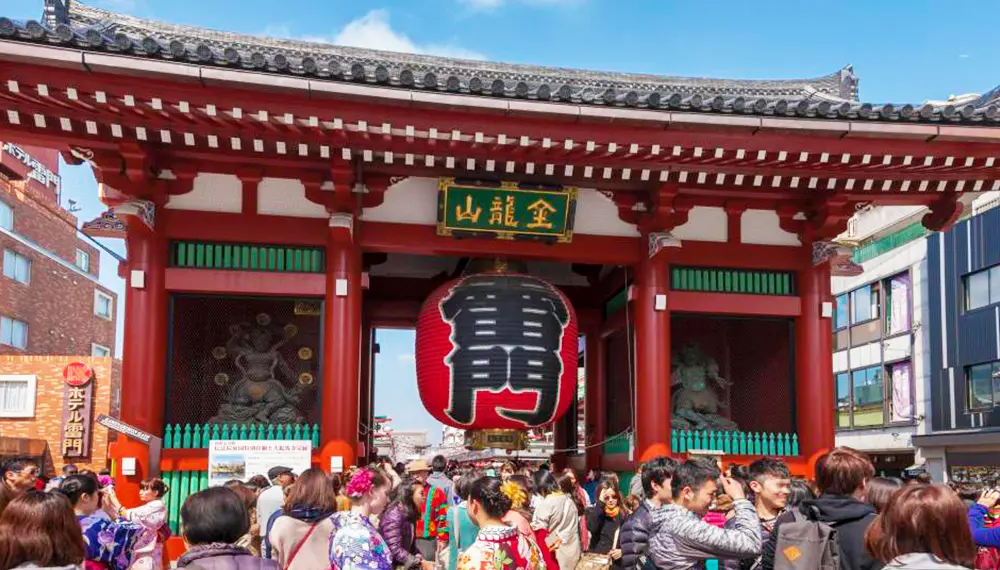
The iconic gate and its giant lantern at Sensoji Temple ©senso-ji
While in the Asakusa area, consider stopping off in nearby Ryogoku to visit the Edo-Tokyo Museum, where you can learn more about the history and culture of the castle town that became Tokyo. The water bus pier at Ryogoku River Center (just a short way from Ryogoku) will take you to Waters Takeshiba, a 10-minute walk from Hama-rikyu Gardens.
Tokyo Metropolitan Edo-Tokyo Museum: The entire museum is closed for large-scale renovations from April 1, 2022 through spring 2026 (scheduled reopening).
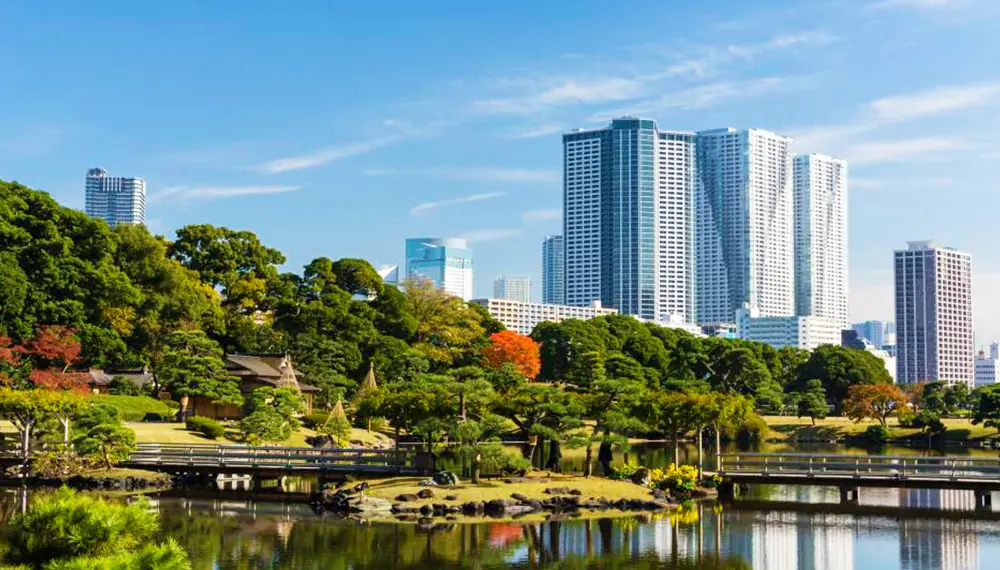
Glimpse a slice of pre-modern Tokyo as you pass Hama-rikyu Gardens
To the north of Hama-rikyu Gardens you will find the Tokyo Imperial Palace. During the days of Edo, this was the site of Edo Castle and the seat of the Tokugawa Shogunate. Surrounded by an intricate system of moats, the castle was impenetrable.
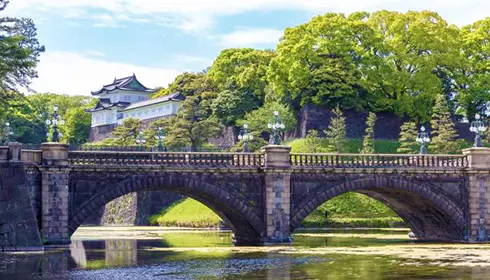
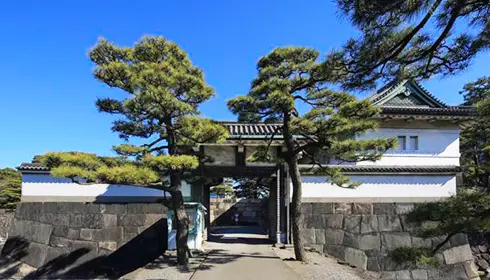
The Tokyo Imperial Palace stands where Edo Castle once stood
Visit the grounds to stroll through gardens and see relics of the past which include the foundations of the castle keep, gates, and guardhouses. You can even rent boats to row along a section of the Chidorigafuchi Moat.
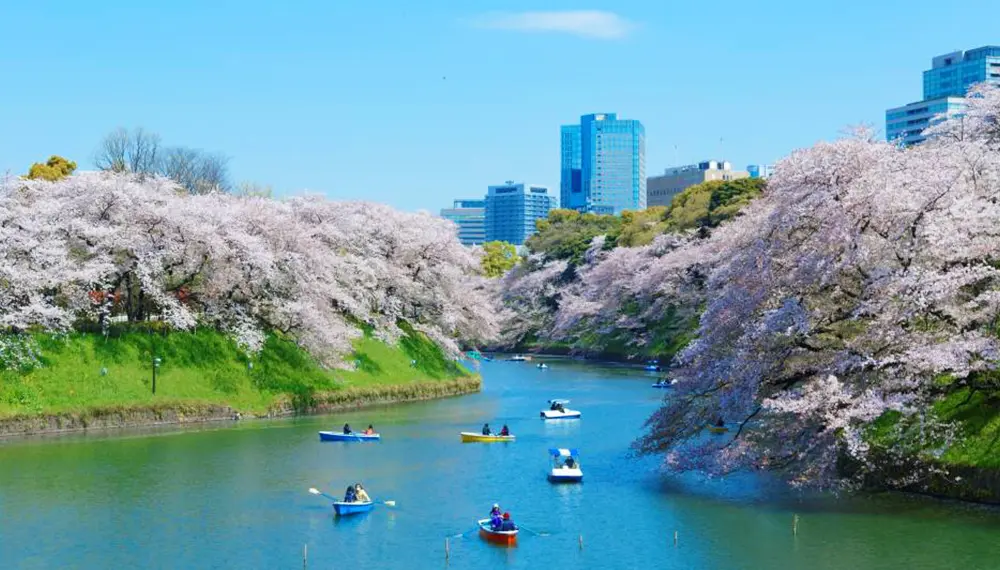
Rowboats on Chidorigafuchi Moat during cherry blossom season
River cruises along Tokyo’s waterways
Operating along the Sumida, Kanda, and Nihonbashi rivers, cruises are an excellent way to take in the sights of the city, old and new. From Nihonbashi, Asakusa, and Ryogoku, several operators offer tours, pleasure cruises, and more, which cruise the rivers and open waters of Tokyo.
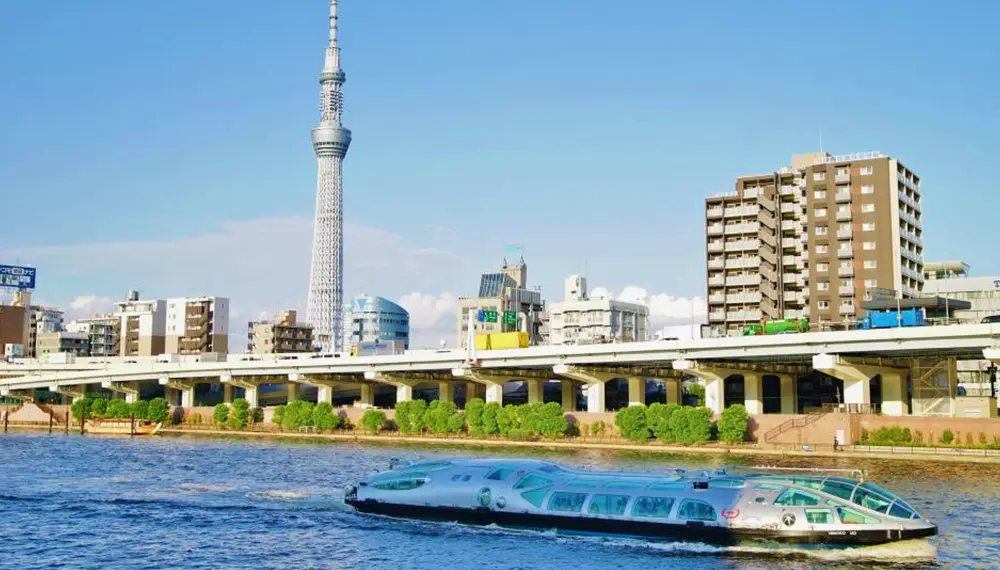
One of the services operating along the Sumida River
Writing the next chapter
Tokyo's waterfront areas continue to evolve and nowhere is that more true than the bay area. In the last few decades, land has been reclaimed from the sea to accommodate the growing needs of the metropolis. To experience the changing shape of the city, visit Odaiba, Tennozu Isle, or Shibaura—some of the newest and fastest developing neighborhoods.
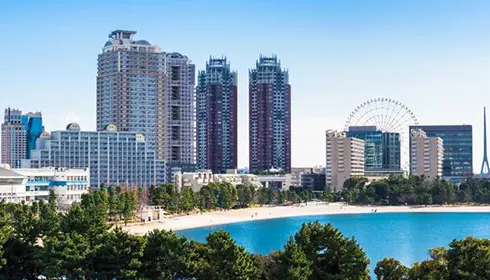 Odaiba
Odaiba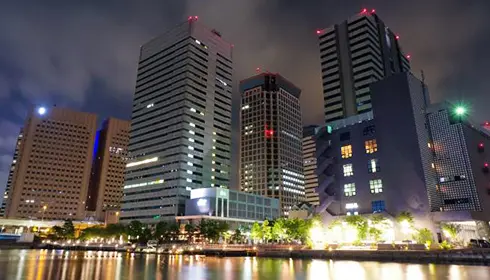 Tennozu Isle
Tennozu Isle
